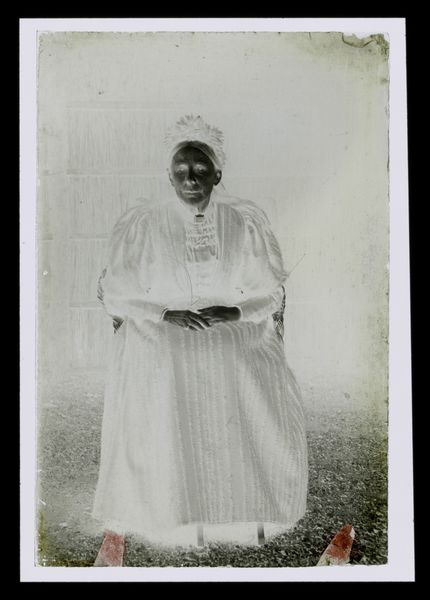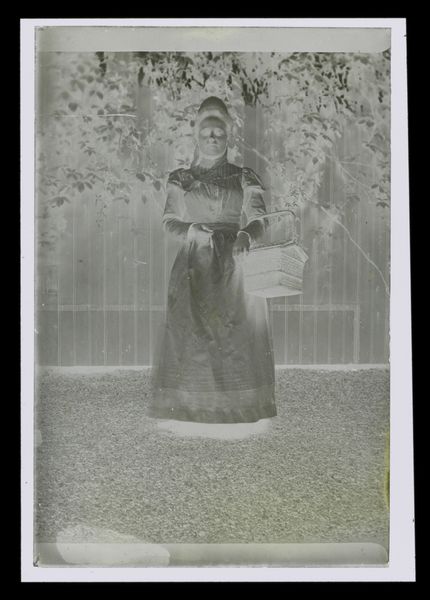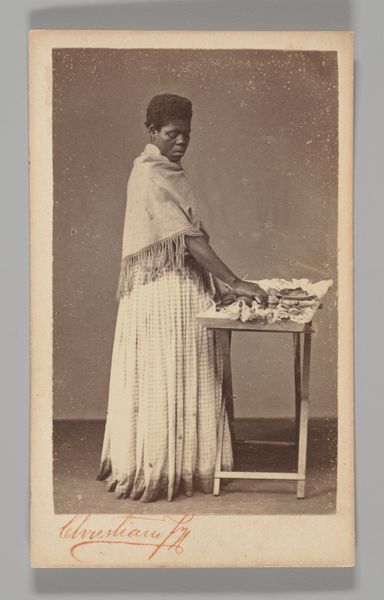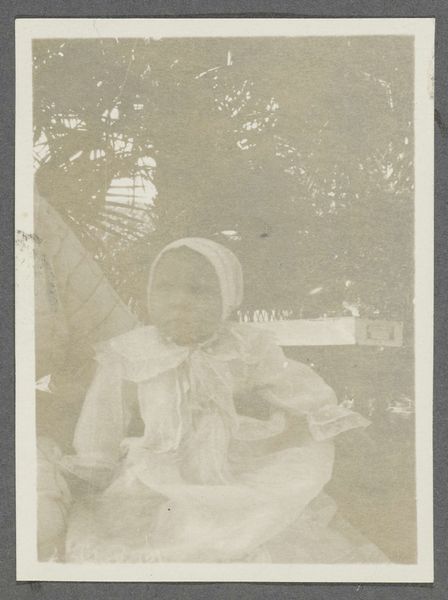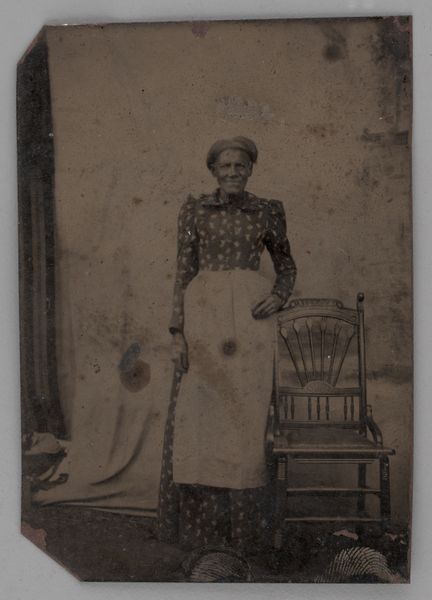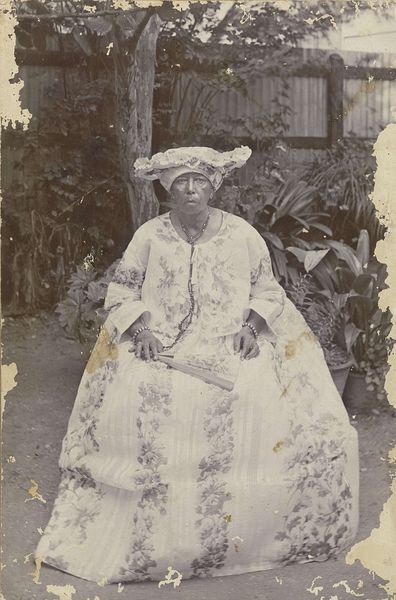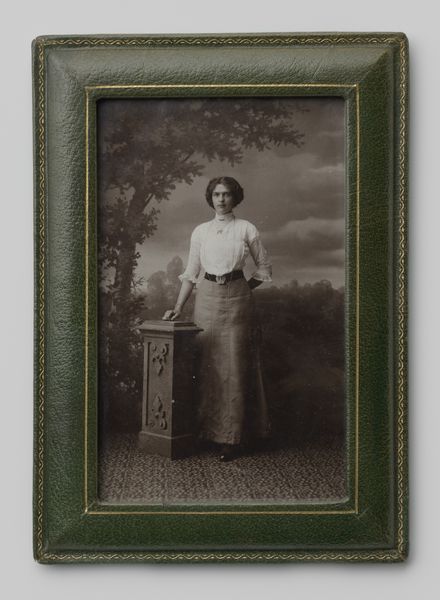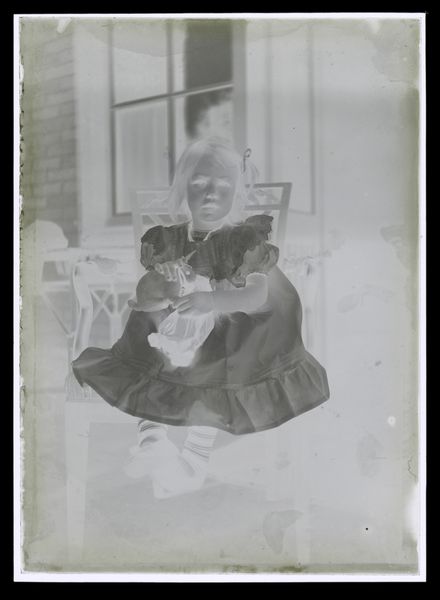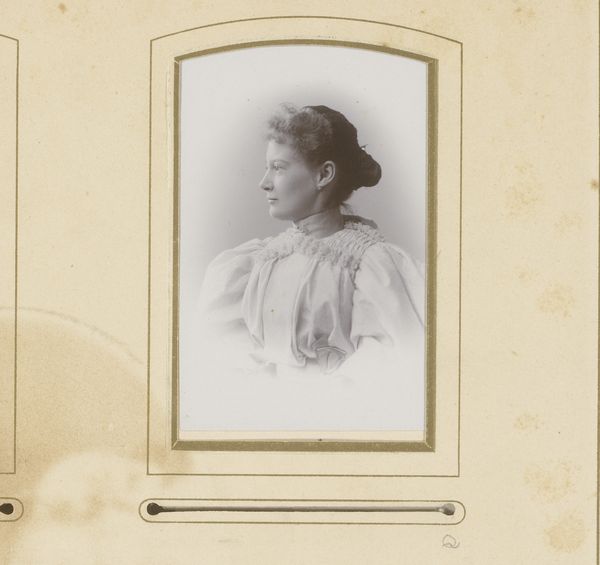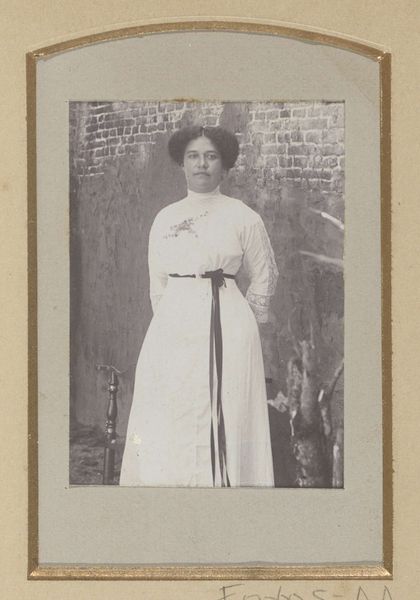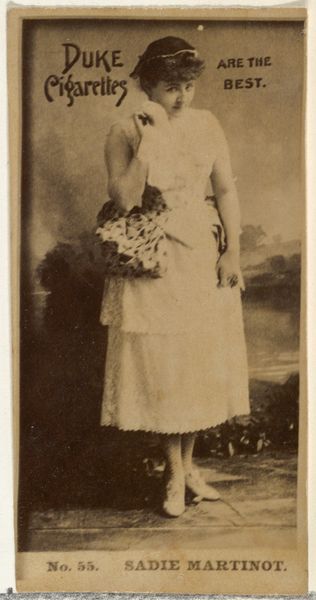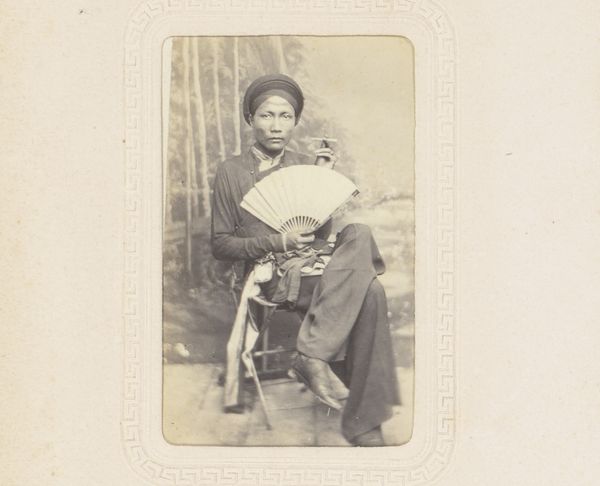
photography, gelatin-silver-print
#
portrait
#
photography
#
gelatin-silver-print
Dimensions: height 180 mm, width 130 mm
Copyright: Rijks Museum: Open Domain
Curator: Here we have an interesting example of early photography. It's entitled "Portret van een onbekende vrouw," or "Portrait of an Unknown Woman," a gelatin silver print likely dating from around 1865 to 1900. Editor: It has such a ghostly, almost ethereal quality. The reversed tones make her look like she's fading into the light. Curator: The negative presentation is striking. It was obviously never intended for display like this. It begs the question, how do images, and subsequently the sitters within them, achieve visibility? Who decides which ones make it to the archive and which remain hidden? Editor: Exactly, and consider the labor involved. Gelatin silver prints, while offering finer detail, demanded careful preparation of the light-sensitive emulsion. Coating the paper, controlling exposure times, and developing it all had to be precise. The final negative had immense value for those commissioning and executing photographic portraits, which involved an often-lengthy posing session. Curator: It's also important to remember that, during this period, photographic portraits were often reserved for the elite or those commemorating specific events like marriages. The meticulous detail captured hints at the sitters status or significance, further obscuring our understanding of "the average" woman, in that era. We often learn about history only through portraiture or other archival forms focused on a small percent of the global population, such as the European Aristocracy or their contemporaries. Editor: Even in its spectral state, the woman's dress seems meticulously crafted, with lace details that must have taken hours to create. I wonder what sort of economic power went into being able to produce, acquire, and commission such a garment. That also speaks volumes about who had the luxury of sitting for a photographic portrait, and who had the laborious burden of crafting its intricate textures. Curator: Indeed. And viewing this photograph as a negative, we see those societal values inverted, demanding a reevaluation of our visual conventions. This ghostly figure then asks us to think about how these values permeate our perceptions of art history. Editor: A potent reminder to consider the materials, the labor, and the power dynamics embedded within every piece, visible or invisible.
Comments
No comments
Be the first to comment and join the conversation on the ultimate creative platform.
